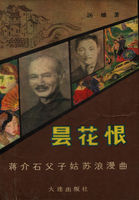Chapter 2-The Place De Gréve
There remains but one slight vestige of the Place de Gréve as it was in those days;namely,the charming little turret at the northern angle of the square,and that,buried as it is already under the unsightly coating of whitewash which obliterates the spirited outlines of its carvings,will doubtless soon have disappeared altogether,submerged under that flood of raw,new buildings which is rapidly swallowing up all the old facades of Paris.
Those who,like ourselves,never cross the Place de Gréve without a glance of pity and sympathy for the poor little turret squeezed between two squalid houses of the time of Louis XV,can easily conjure up in fancy the ensemble of edifices of which it formed a part,and so regain a complete picture of the old Gothic square of the fifteenth century.
Then,as now,it was an irregular square bounded on one side by the quay,and at the others by rows of tall,narrow,and gloomy houses.By daylight,there was much to admire in the diversity of these edifices,all sculptured in wood or stone,and offering,even then,perfect examples of the various styles of architecture in the Middle Ages,ranging from the fifteenth back to the eleventh century,from the perpendicular,which was beginning to oust the Gothic,to the Roman which the Gothic had supplanted,and which still occupied beneath it the first story of the ancient Tour de Roland,at the corner of the square adjoining the Seine on the side of the Rue de la Tannerie.At night,nothing was distinguishable of this mass of buildings but the black and jagged outline of the roofs encircling the Place with their chain of sharp-pointed gables.For herein consists one of the radical differences between the cities of that day and the present,that whereas now the fronts of the houses look on the squares and streets,then it was their backs.During the last two centuries the houses have completely turned about.
In the centre of the eastern side of the square rose a clumsy and hybrid pile formed of three separate buildings joined together.It was known by three names,which explain its history,its purpose,and its style of architecture:the Maison au Dauphin,because Charles V had inhabited it as Dauphin;the Marchandise,because it was used as the Town Hall;the Maison-aux-Piliers(domus ad pitorum),because of the row of great pillars that supported its three storeys.Here the city found all that was necessary to a good city like Paris:a chapel for its prayers,a plaidoyer or court-room wherein to hear causes and,at need,to give a sharp set-down to the King's men-at-arms,and in the garrets an arsenal stocked with ammunition.For the good citizens of Paris knew full well that it is not sufficient at all junctures to depend either on prayer or the law for maintaining the franchises of the city,and have always some good old rusty blunderbuss or other in reserve in the attic of the Htel de Ville.
La Gréve already had that sinister aspect which it still retains owing to the execrable associations it calls up,and the frowning Htel de Ville of Dominique Bocador which has replaced the Maison-aux-Piliers.It must be admitted that a gibbet and a pillory—a justice and a ladder,as they were then called—set up side by side in the middle of the Place,went far to make the passer-by turn in aversion from this fatal spot,where so many human beings throbbing with life and health have been done to death,and which fifty years later was to engender the Saint-Vallier fever,that morbid terror of the scaffold,the most monstrous of all maladies,because it comes not from the hand of God but of man.
It is a consoling thought,let it be said in passing,to remember that the death penalty,which three centuries ago encumbered with its spiked wheels,its stone gibbets,all its dread apparatus of death permanently fixed into the ground,the Place de Gréve,the Halles,the Place Dauphine,the Cours du Trahoir,the Marchè-aux-Pourceaux or pig-market,awful Montfaucon,the Barriére-des-Sergents,the Place-au-Chats,the Porte Saint-Denis,Champeaux,the Porte Baudets,the Porte Saint-Jacques,not to mention the pillories under the jurisdiction of the Bishop,of the Chapters,of the Abbots,of the Priors;nor the judicial drownings in the Seine—it is consoling,we repeat,to reflect that after losing,one by one,all the pieces of its dread panoply:its multiplicity of executions,its fantastically cruel sentences,its rack at the Grand Chatelet—the leather stretcher of which had to be renewed every five years—that ancient suzerain of feudal society is to-day wellnigh banished from our laws and our cities,tracked from code to code,hunted from place to place,till in all great Paris it has but one dishonoured corner it can call its own—in the Place de Gréve;but one wretched guillotine,furtive,craven,shameful,that always seems to fear being caught red-handed,so quickly does it vanish after dealing its fatal blow.
Chapter 3-Besos Para Golpes1
By the time Pierre Gringoire reached the Place de Gréve he was chilled to the bone.He had made his way across the Pont-aux-Meuniers—the Millers'bridge—to avoid the crowd on the Pont-au-Change and the sight of Jehan Fourbault's banners;but the wheel of the episcopal mills had splashed him as he passed,and his coat was wet through.In addition,it seemed to him that the failure of his play made him feel the cold more keenly.He hastened,therefore,to get near the splendid bonfire burning in the middle of the Place,but found it surrounded by a considerable crowd.















